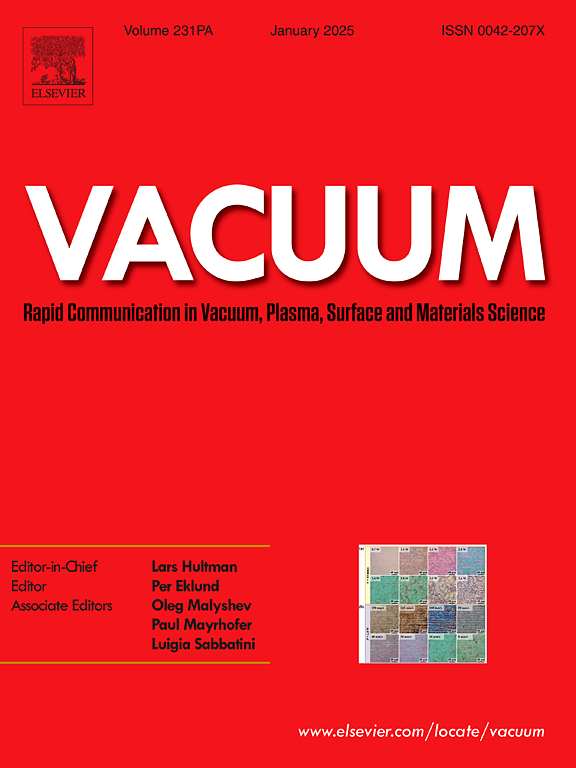Atomistic simulation of porous nanocrystalline NiTi shape memory alloy considering coupling effects of transformation and plasticity
IF 3.9
2区 材料科学
Q2 MATERIALS SCIENCE, MULTIDISCIPLINARY
引用次数: 0
Abstract
Nanocrystalline NiTi alloy exhibits recoverable martensitic transformation and irrecoverable plastic deformation when subjected to sufficiently high stresses. Mechanical behaviors including superelasticity and plasticity of NiTi alter drastically with the change in its initial microstructure such as void and grain size. This work mainly focuses on investigating the coupling effects of transformation and plasticity as well as the grain size and porosity dependent superelastic-plastic responses of porous nanocrystalline NiTi by using molecular dynamics simulations. Results demonstrate that plastic deformation exerts a potent inhibitory influence on the reverse phase transformation from martensite to austenite. The mechanisms of the transformation-plasticity coupling and the generation of residual strain after unloading are revealed at the atomic level. The evolution of the microstructure manifests that the residual martensite due to partial reverse transformation and the dislocation inside the grains as well as the disordered structures at the interfaces make the contribution to the total residual strain. The concentration of plastic shear strain around the voids and on the grain boundaries indicates that grain-boundary sliding and stress concentration around the voids contribute significantly to the plastic deformation. Simulated results indicate that porosity and grain size exert significant effects on the superelastic-plastic behaviors.
考虑相变和塑性耦合效应的多孔纳米晶NiTi形状记忆合金的原子模拟
在足够高的应力作用下,纳米晶NiTi合金表现出可恢复的马氏体相变和不可恢复的塑性变形。NiTi的超弹塑性等力学行为随着孔隙和晶粒尺寸等初始组织的改变而发生显著变化。本文主要通过分子动力学模拟研究多孔纳米晶NiTi的相变与塑性耦合效应以及晶粒尺寸和孔隙率相关的超弹塑性响应。结果表明,塑性变形对马氏体向奥氏体的反向相变有明显的抑制作用。在原子水平上揭示了相变-塑性耦合和卸载后残余应变产生的机理。显微组织的演变表明,由于部分反转变而产生的残余马氏体和晶粒内部的位错以及界面处的无序组织对总残余应变有贡献。孔洞周围和晶界上的塑性剪切应变集中表明,孔洞周围的晶界滑动和应力集中对塑性变形有重要影响。模拟结果表明,孔隙率和晶粒尺寸对材料的超弹塑性性能有显著影响。
本文章由计算机程序翻译,如有差异,请以英文原文为准。
求助全文
约1分钟内获得全文
求助全文
来源期刊

Vacuum
工程技术-材料科学:综合
CiteScore
6.80
自引率
17.50%
发文量
0
审稿时长
34 days
期刊介绍:
Vacuum is an international rapid publications journal with a focus on short communication. All papers are peer-reviewed, with the review process for short communication geared towards very fast turnaround times. The journal also published full research papers, thematic issues and selected papers from leading conferences.
A report in Vacuum should represent a major advance in an area that involves a controlled environment at pressures of one atmosphere or below.
The scope of the journal includes:
1. Vacuum; original developments in vacuum pumping and instrumentation, vacuum measurement, vacuum gas dynamics, gas-surface interactions, surface treatment for UHV applications and low outgassing, vacuum melting, sintering, and vacuum metrology. Technology and solutions for large-scale facilities (e.g., particle accelerators and fusion devices). New instrumentation ( e.g., detectors and electron microscopes).
2. Plasma science; advances in PVD, CVD, plasma-assisted CVD, ion sources, deposition processes and analysis.
3. Surface science; surface engineering, surface chemistry, surface analysis, crystal growth, ion-surface interactions and etching, nanometer-scale processing, surface modification.
4. Materials science; novel functional or structural materials. Metals, ceramics, and polymers. Experiments, simulations, and modelling for understanding structure-property relationships. Thin films and coatings. Nanostructures and ion implantation.
 求助内容:
求助内容: 应助结果提醒方式:
应助结果提醒方式:


